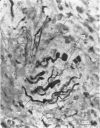Abstract
1. In the duck systemic arterial baroreceptors which cause bradycardia in response to induced hypertension are located in the walls of the ascending aorta, innervated by the depressor nerves.
2. The location of the baroreceptors was confirmed both histologically and by recording activity from the depressor nerve. Stimulation of the central cut end of a depressor nerve caused transient bradycardia and a fall in blood pressure which was maintained throughout the period of stimulation.
3. Cardiovascular adjustments to submergence of 2 min duration were monitored in intact, sham-operated and denervated ducks. The sham-operated and denervated ducks were used in the experiments some 20-50 days post-operation. The denervations were checked at post-mortem.
4. In the first series of experiments on young ducks mean arterial pressure during a 2 min dive fell by 30% in intact, 17·5% in sham-operated, and 48% in denervated ducks. In all ducks heart rate was reduced by 84-85%.
5. In a second series of experiments on older ducks sciatic artery blood flow was also recorded and mean arterial blood pressure fell by 9·2% in intact and by 53% in denervated animals, although there were no significant differences in heart rate during the 2 min dives. In normal animals sciatic vascular resistance increased after 2 min submergence by 7·86 ± 1·7 times, whereas in denervated ducks it increased by only 2·32 ± 0·5 times.
6. The role of systemic arterial baroreceptors in generation of the cardiovascular responses to submergence in ducks is discussed in terms of the input supplied by the baroreceptors to the central nervous system.
Full text
PDF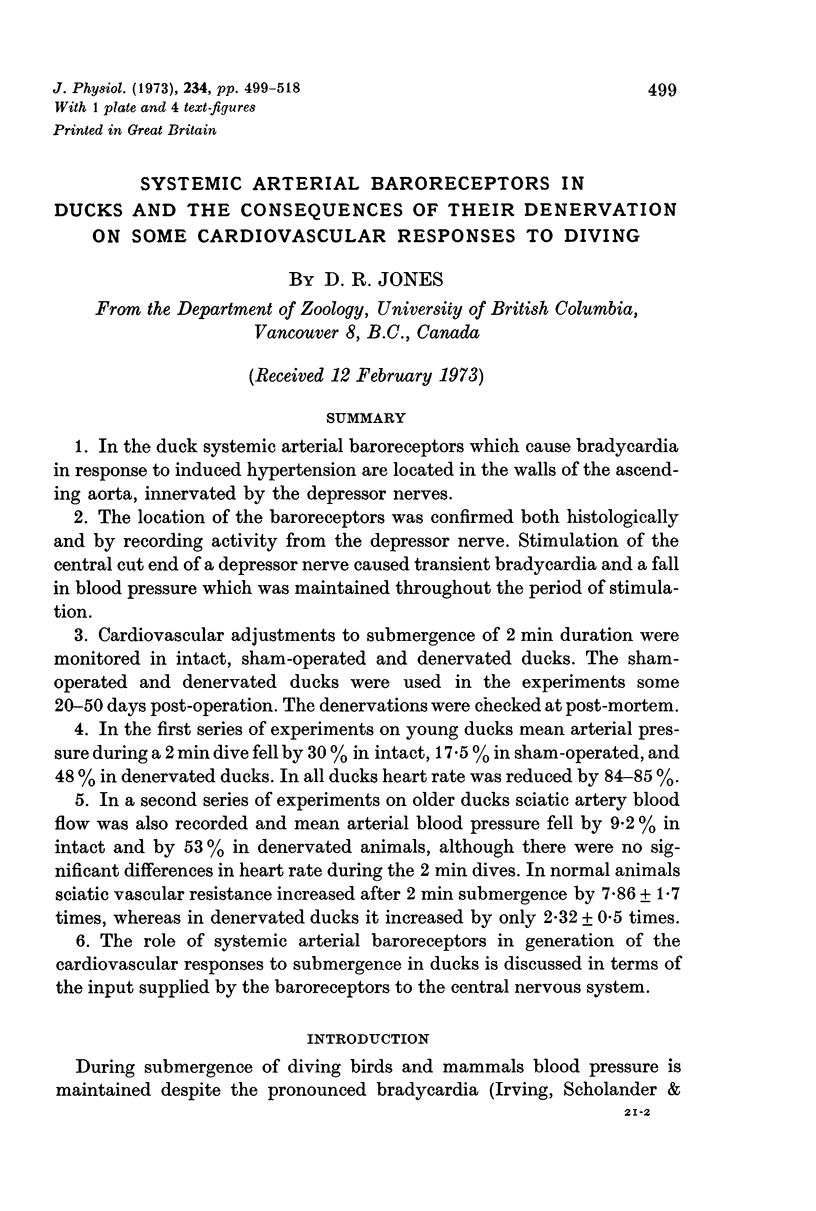
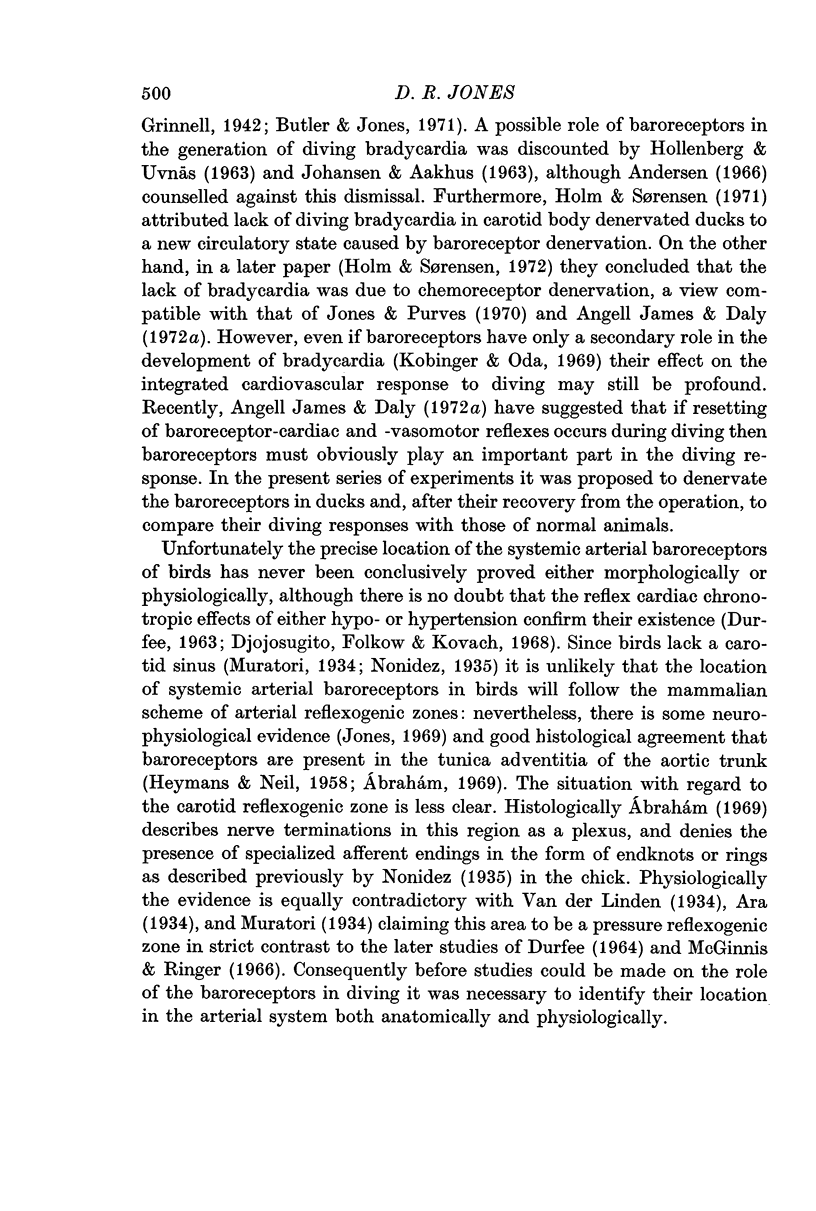
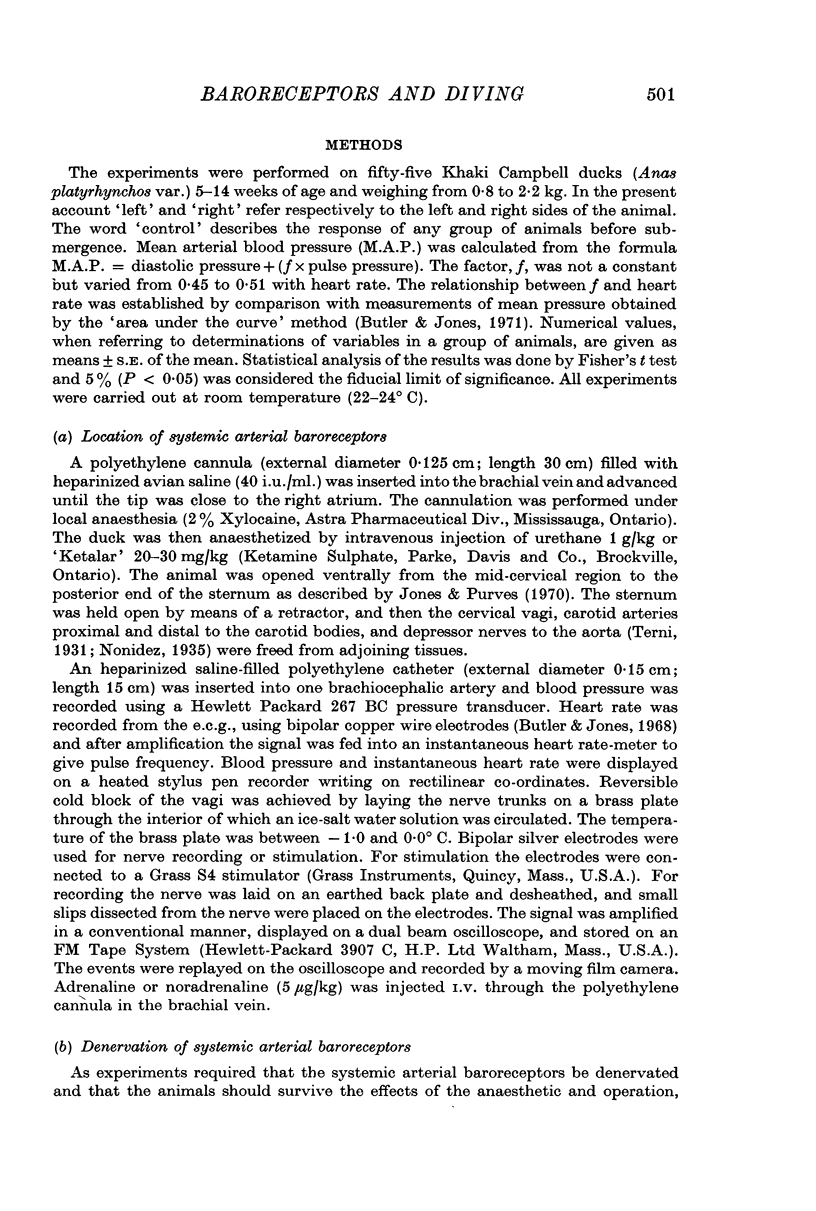
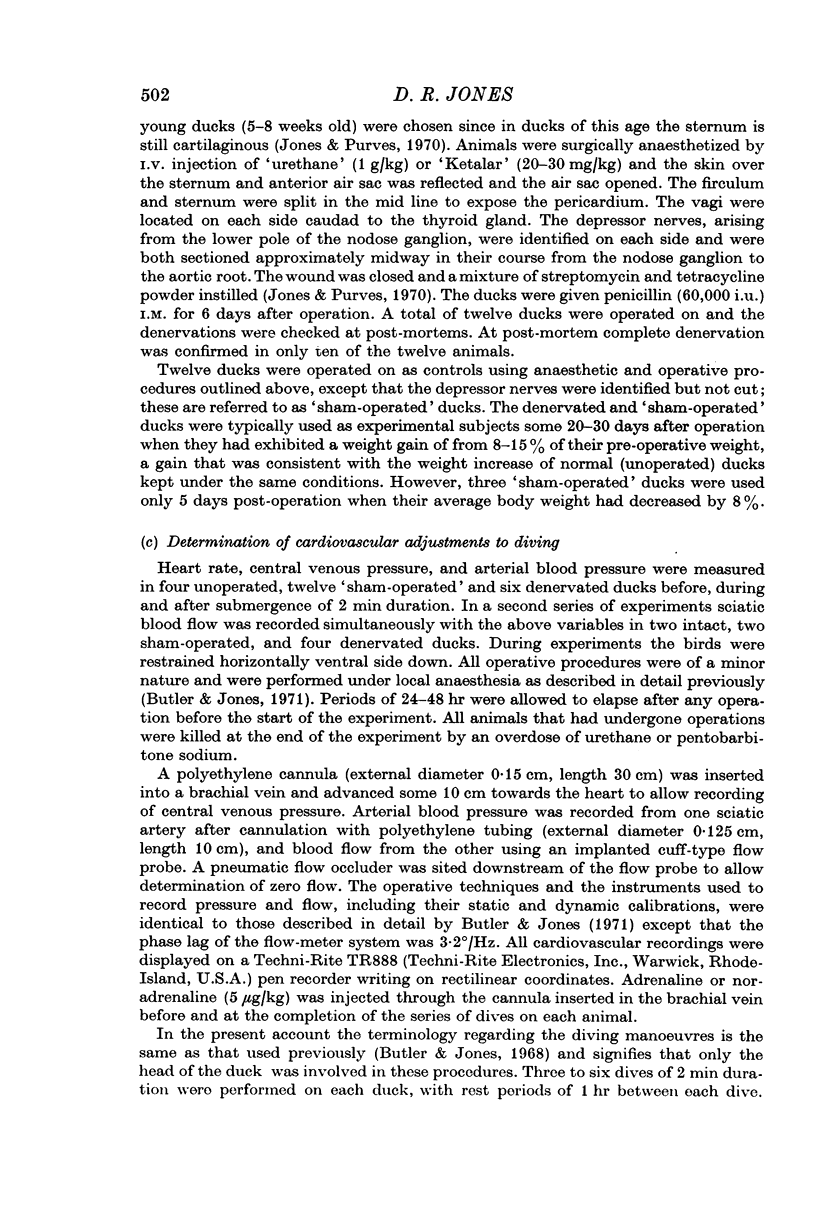
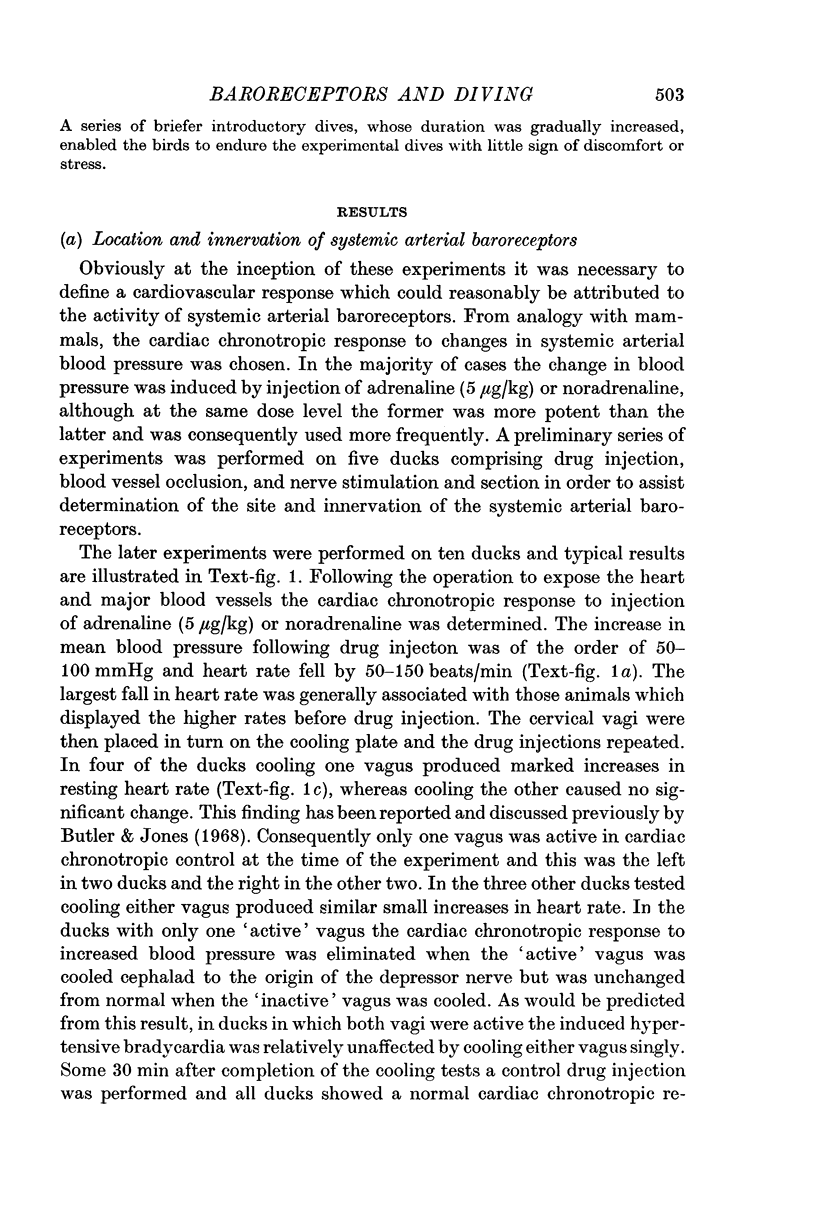
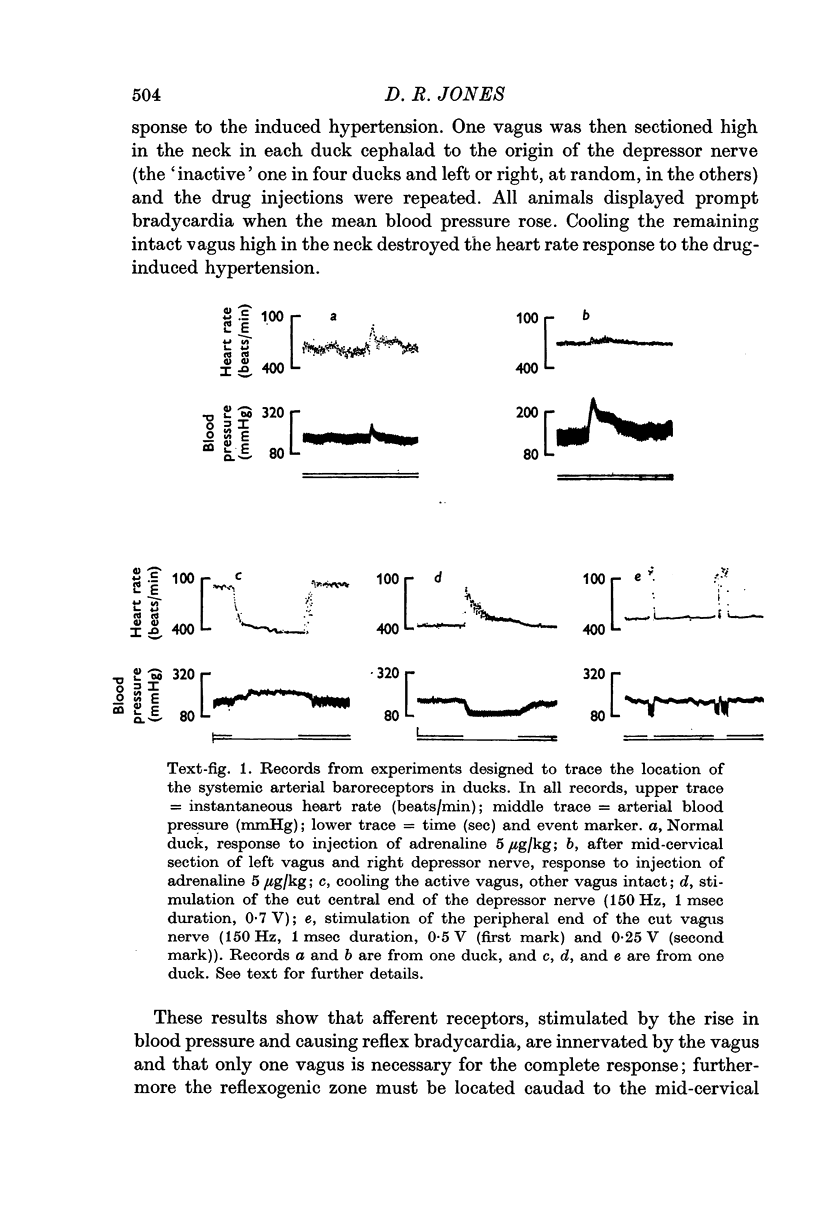
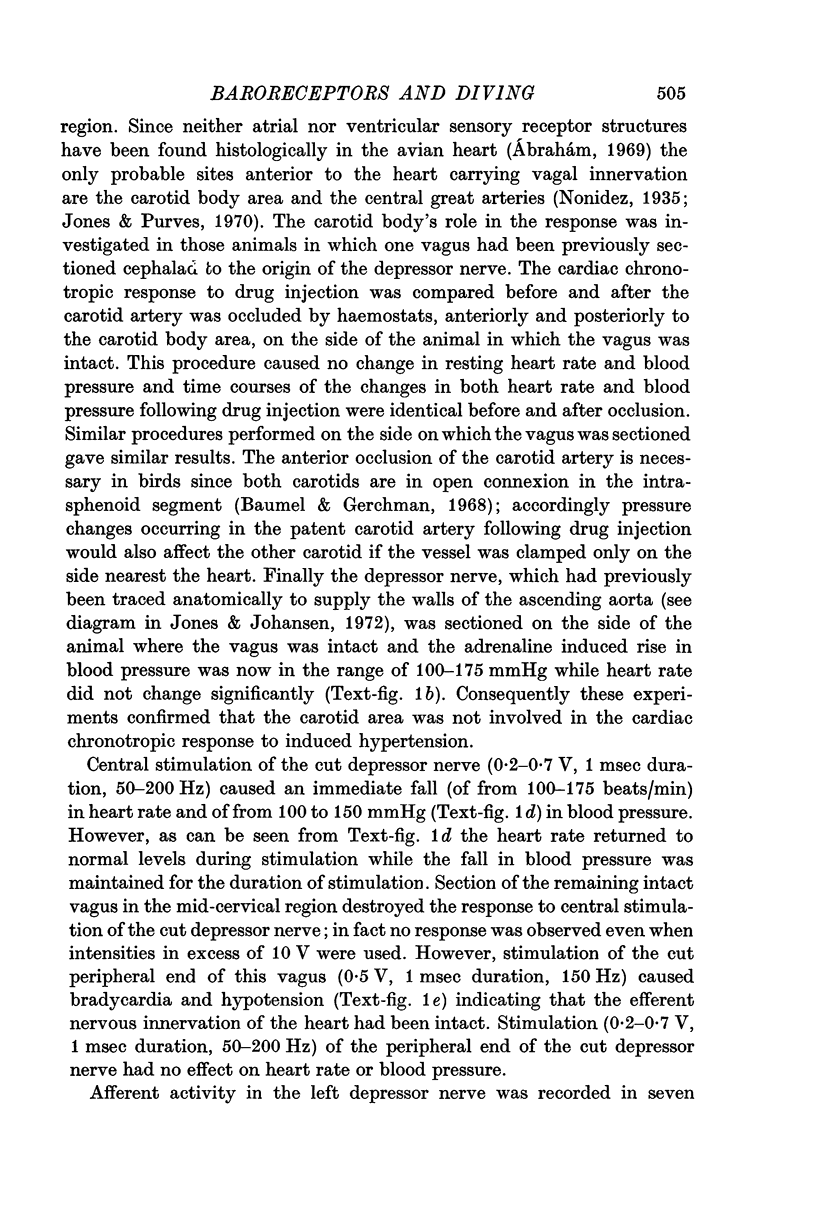
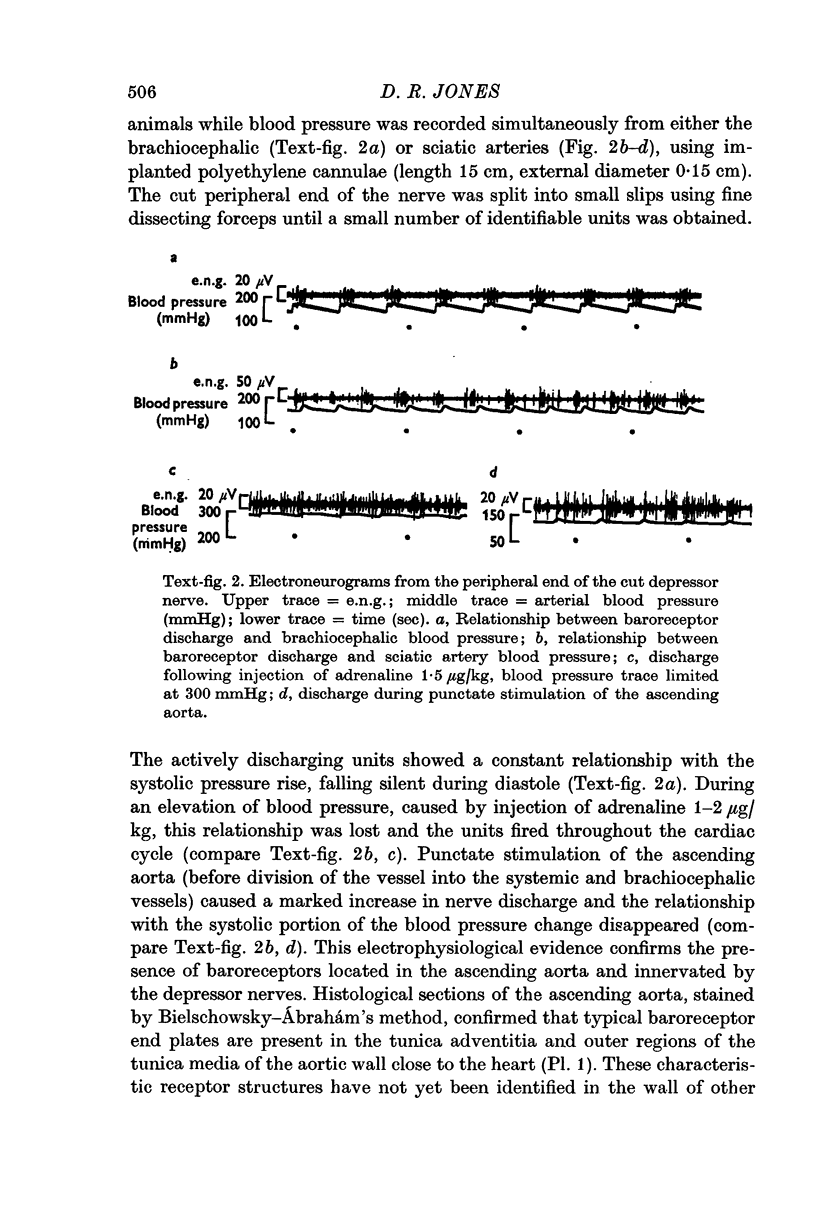
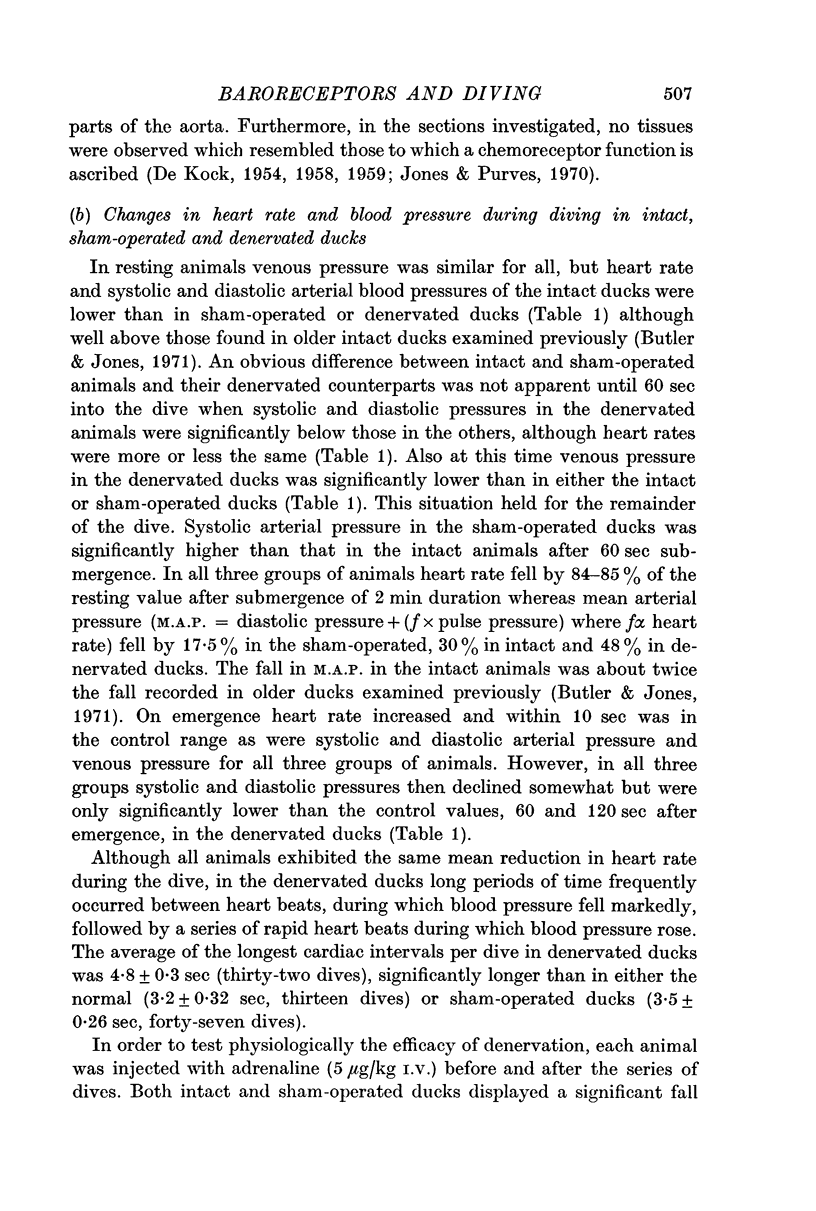
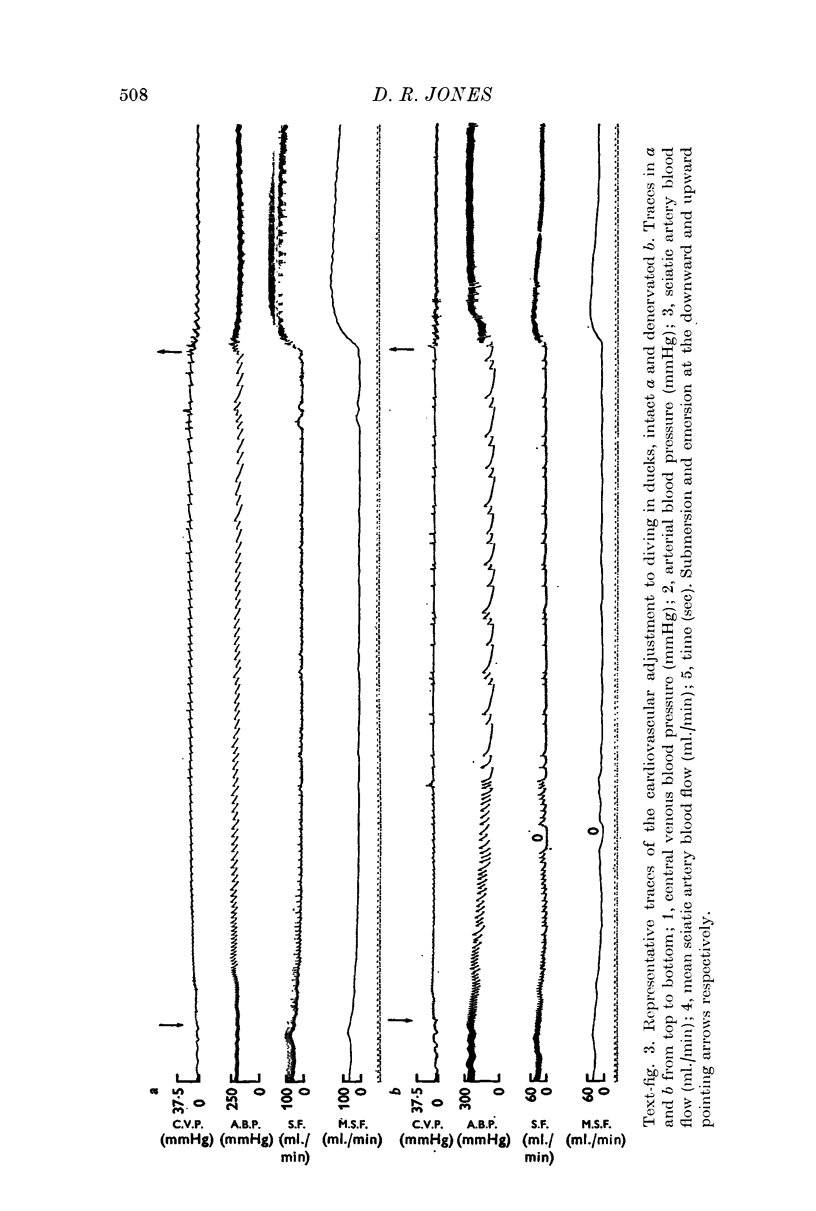
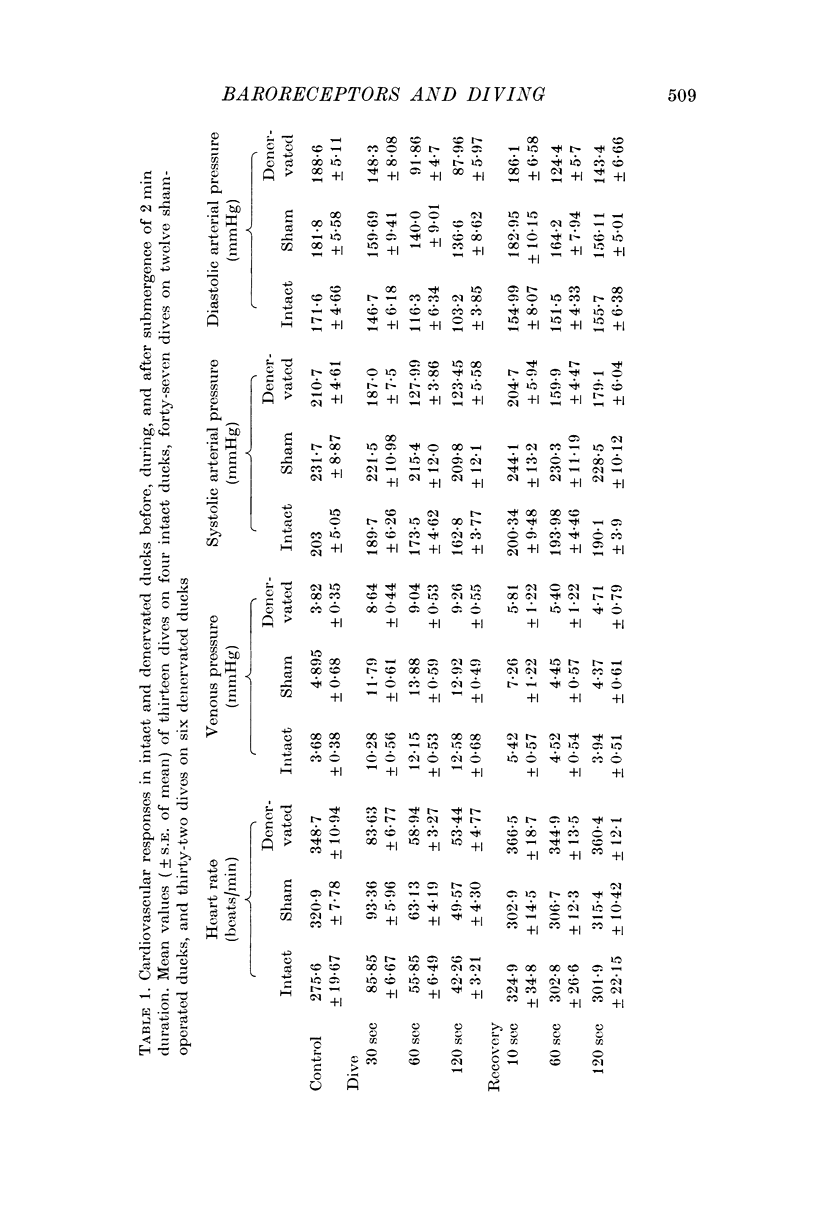
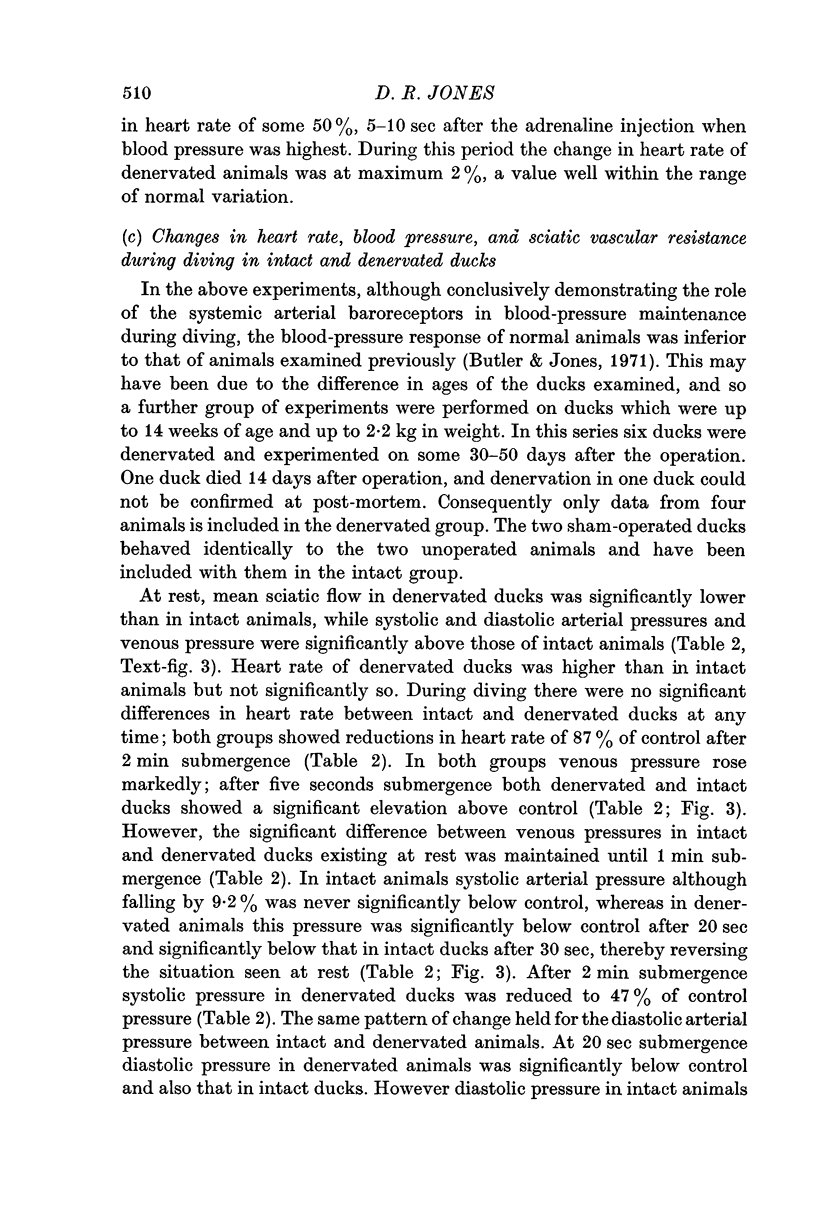
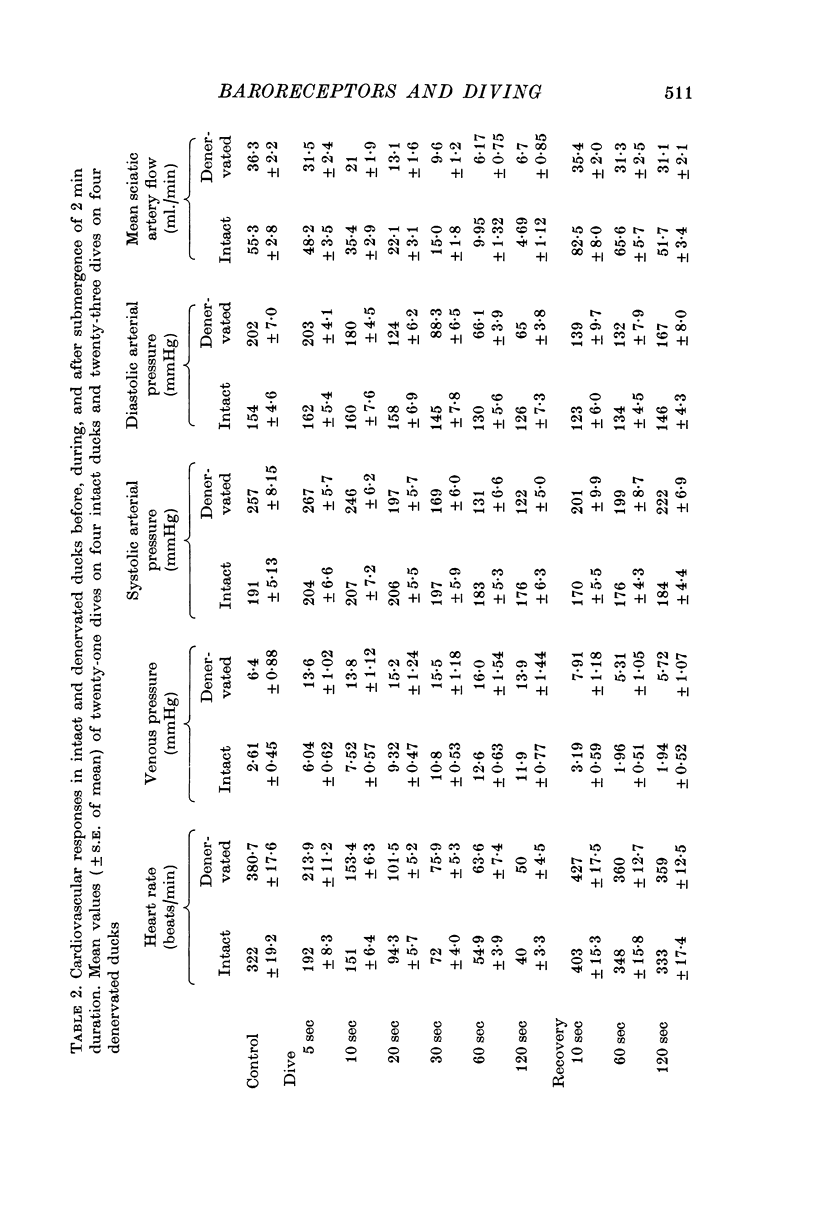
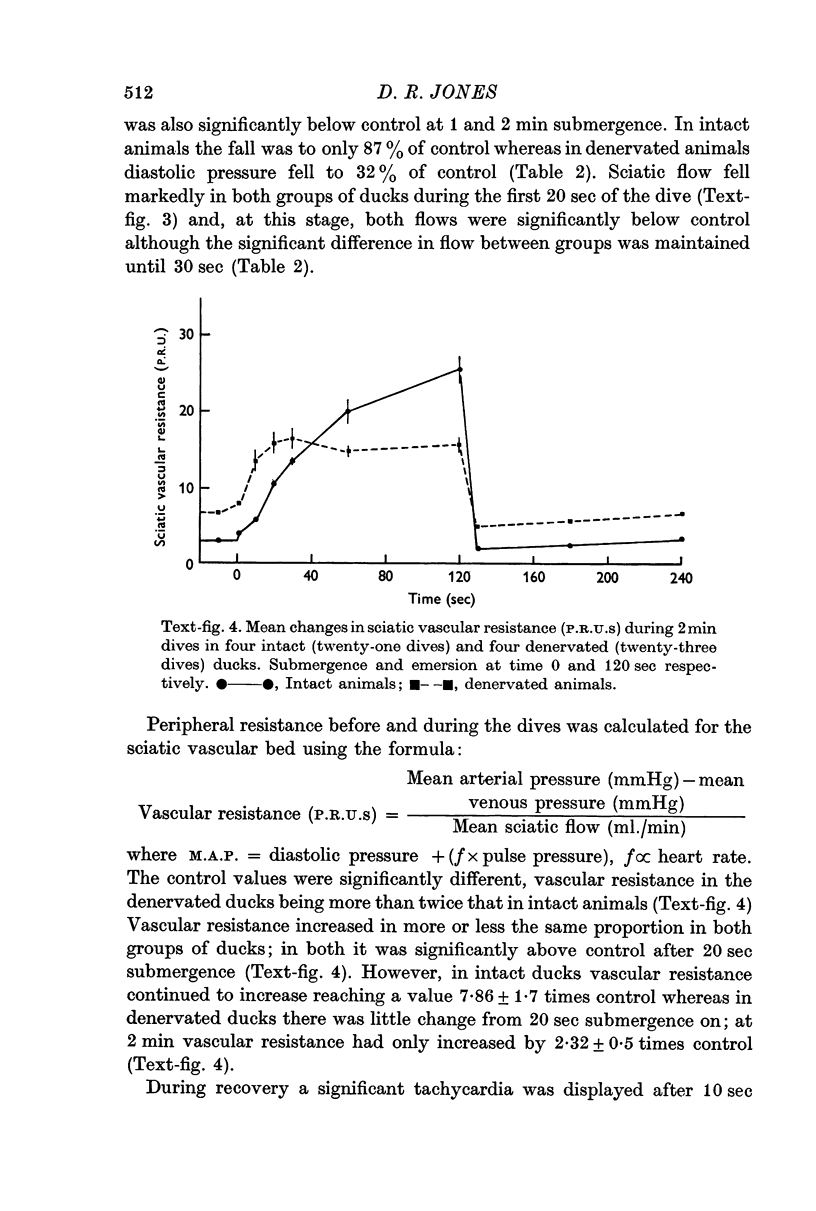
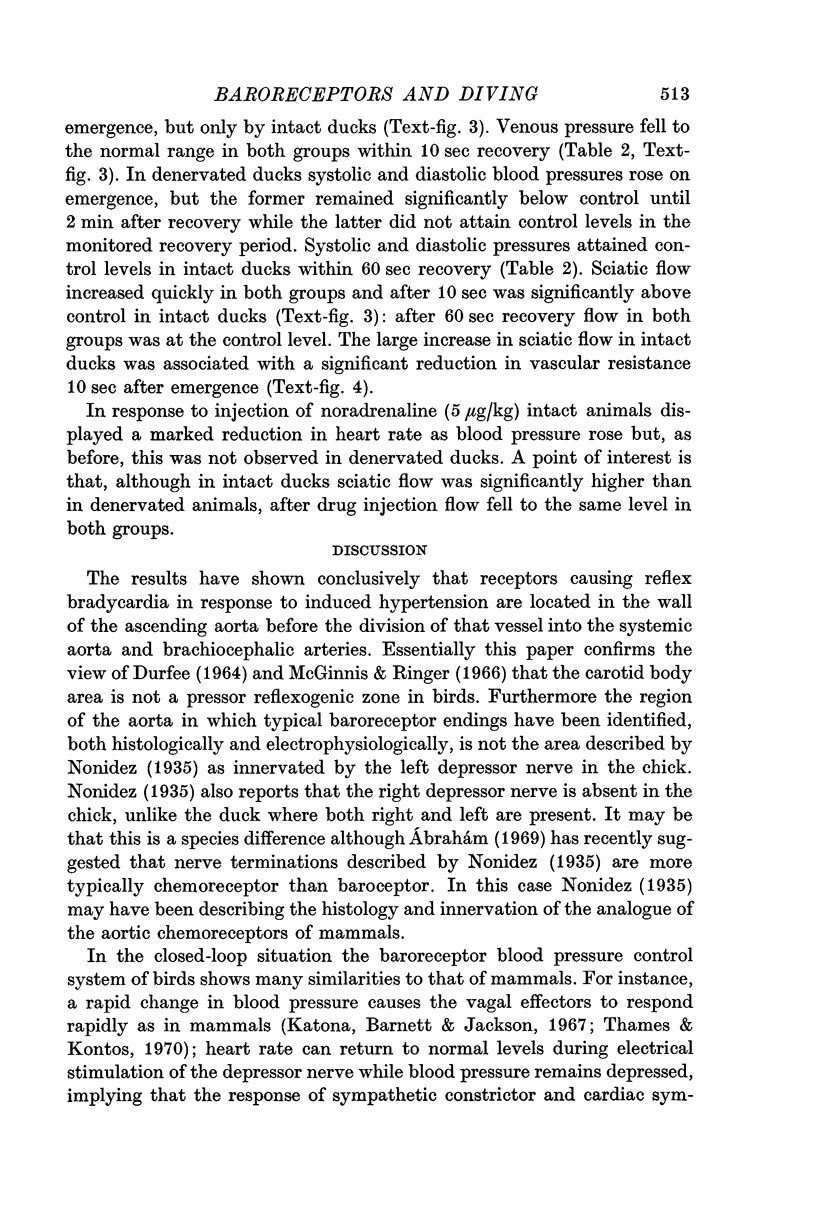
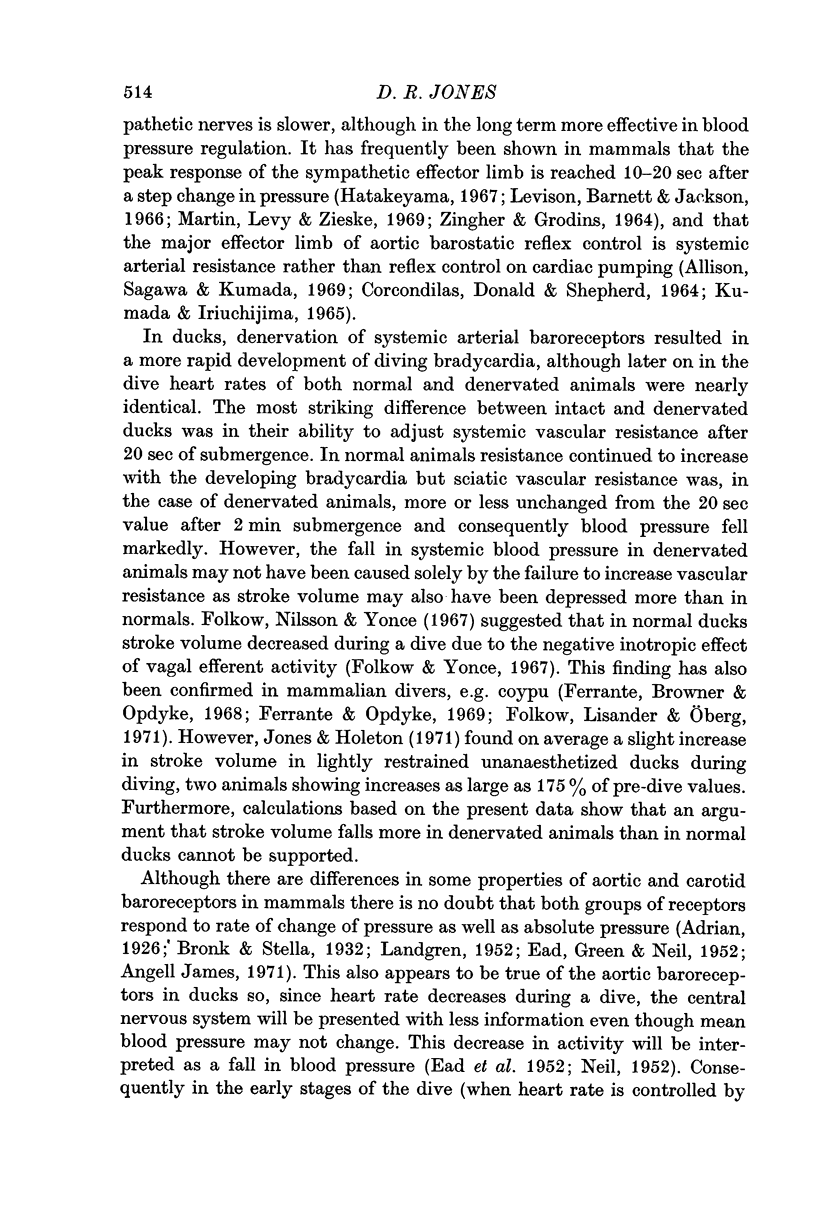
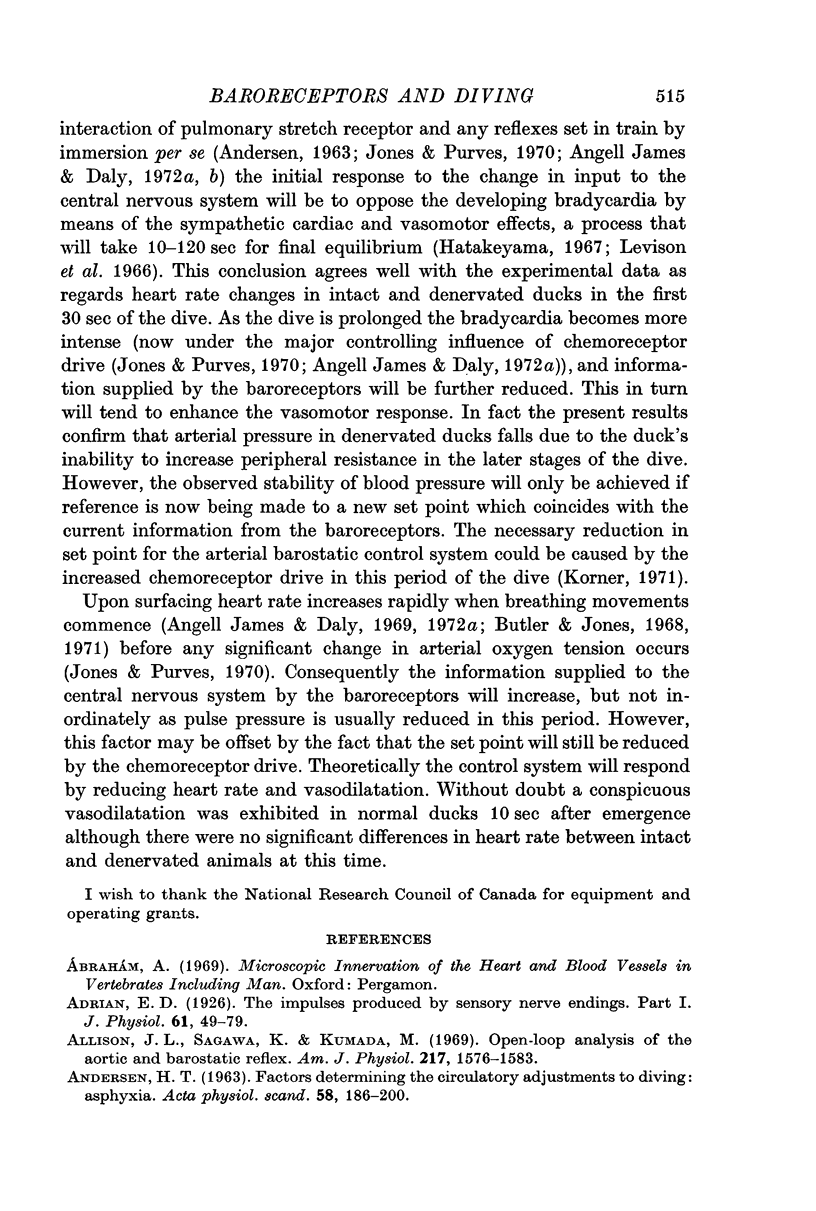
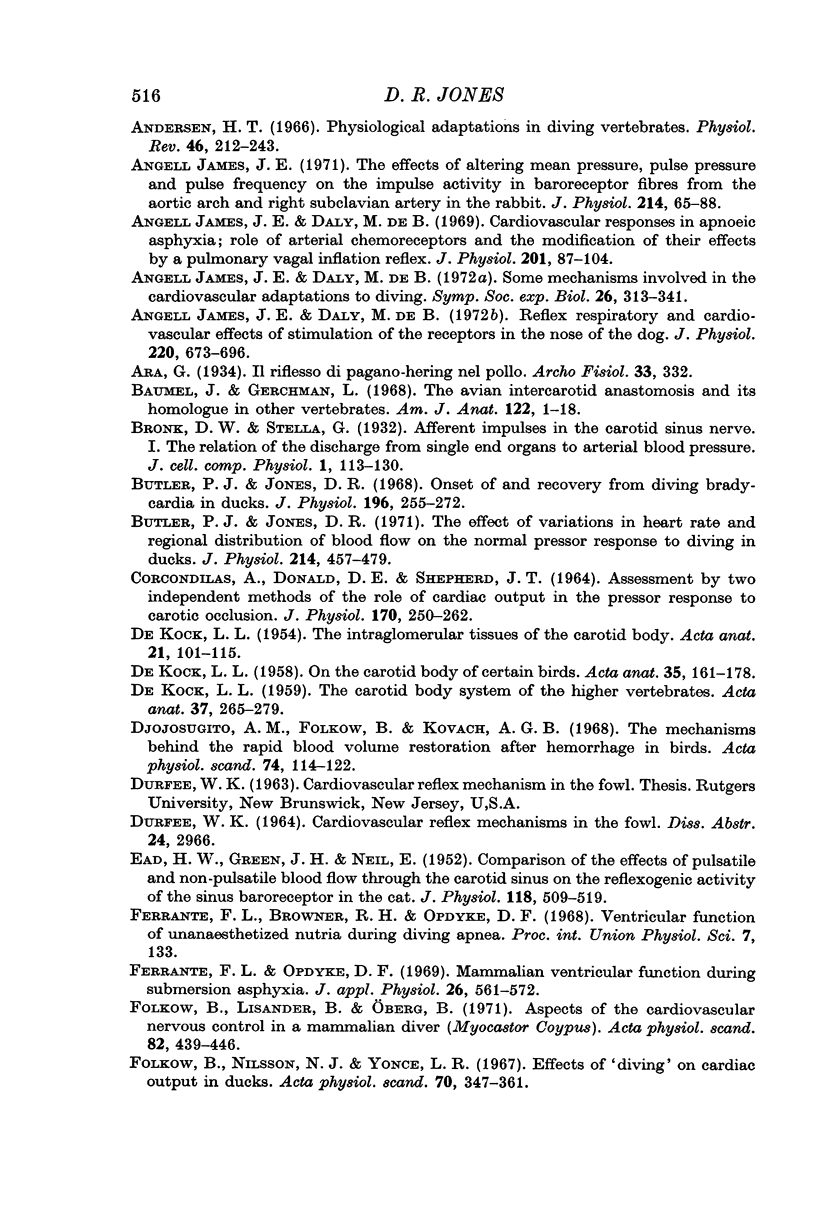
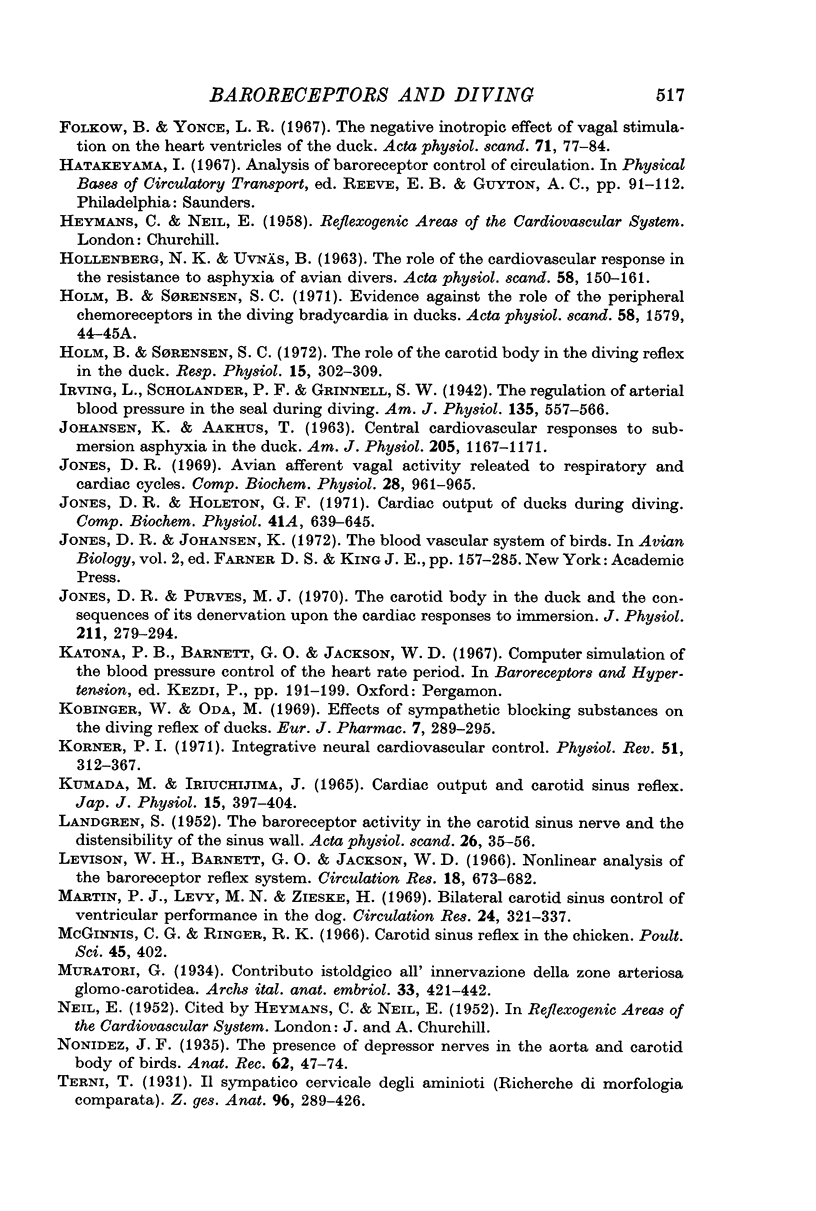
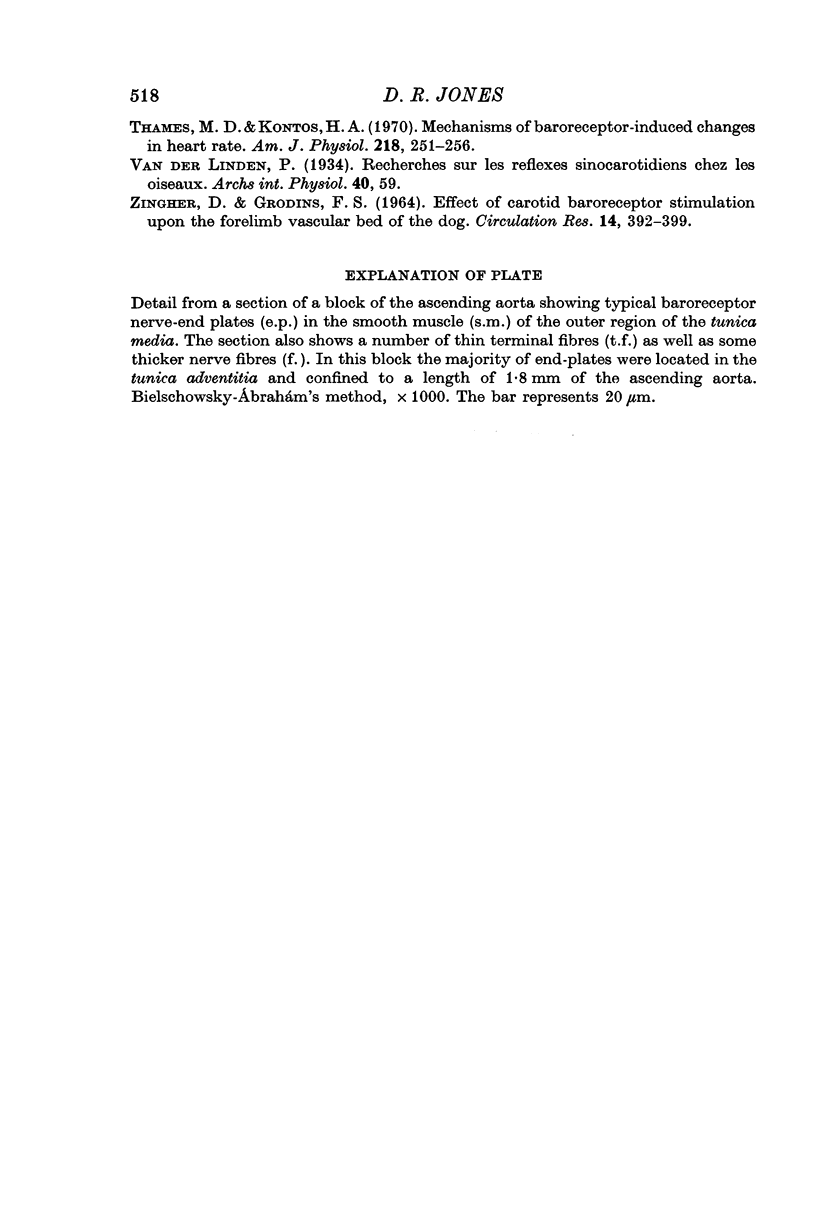
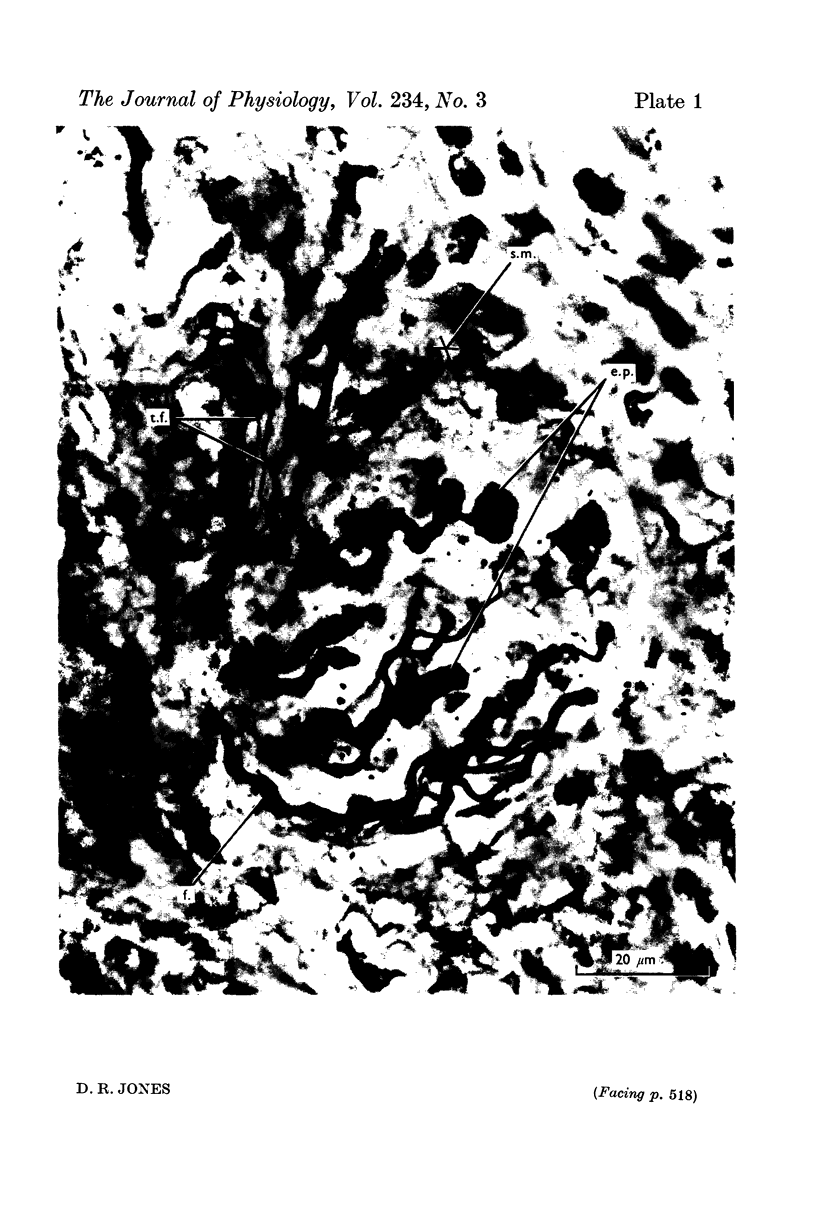
Images in this article
Selected References
These references are in PubMed. This may not be the complete list of references from this article.
- ANDERSEN H. T. Factors determining the circulatory adjustments to diving. II. Asphyxia. Acta Physiol Scand. 1963 Jun-Jul;58:186–200. doi: 10.1111/j.1748-1716.1963.tb02640.x. [DOI] [PubMed] [Google Scholar]
- Adrian E. D. The impulses produced by sensory nerve endings: Part I. J Physiol. 1926 Mar 18;61(1):49–72. doi: 10.1113/jphysiol.1926.sp002273. [DOI] [PMC free article] [PubMed] [Google Scholar]
- Allison J. L., Sagawa K., Kumada M. An open-loop analysis of the aortic arch barostatic reflex. Am J Physiol. 1969 Dec;217(6):1576–1584. doi: 10.1152/ajplegacy.1969.217.6.1576. [DOI] [PubMed] [Google Scholar]
- Andersen H. T. Physiological adaptations in diving vertebrates. Physiol Rev. 1966 Apr;46(2):212–243. doi: 10.1152/physrev.1966.46.2.212. [DOI] [PubMed] [Google Scholar]
- Angell James J. E. The effects of altering mean pressure, pulse pressure and pulse frequency on the impulse activity in baroreceptor fibres from the aortic arch and right subclavian artery in the rabbit. J Physiol. 1971 Apr;214(1):65–88. doi: 10.1113/jphysiol.1971.sp009419. [DOI] [PMC free article] [PubMed] [Google Scholar]
- Baumel J. J., Gerchman L. The avian intercarotid anastomosis and its homologue in other vertebrates. Am J Anat. 1968 Jan;122(1):1–18. doi: 10.1002/aja.1001220102. [DOI] [PubMed] [Google Scholar]
- Butler P. J., Jones D. R. Onset of and recovery from diving bradycardia in ducks. J Physiol. 1968 May;196(2):255–272. doi: 10.1113/jphysiol.1968.sp008505. [DOI] [PMC free article] [PubMed] [Google Scholar]
- Butler P. J., Jones D. R. The effect of variations in heart rate and regional distribution of blood flow on the normal pressor response to diving in ducks. J Physiol. 1971 May;214(3):457–479. doi: 10.1113/jphysiol.1971.sp009444. [DOI] [PMC free article] [PubMed] [Google Scholar]
- CORCONDILAS A., DONALD D. E., SHEPHERD J. T. ASSESSMENT BY TWO INDEPENDENT METHODS OF THE ROLE OF CARDIAC OUTPUT IN THE PRESSOR RESPONSE TO CAROTID OCCLUSION. J Physiol. 1964 Mar;170:250–262. doi: 10.1113/jphysiol.1964.sp007328. [DOI] [PMC free article] [PubMed] [Google Scholar]
- DE KOCK L. L. On the carotid body of certain birds. Acta Anat (Basel) 1958;35(3):161–178. doi: 10.1159/000141406. [DOI] [PubMed] [Google Scholar]
- DE KOCK L. L. The carotid body system of the higher vertebrates. Acta Anat (Basel) 1959;37:265–279. doi: 10.1159/000141471. [DOI] [PubMed] [Google Scholar]
- DE KOCK L. L. The intra-glomerular tissues of the carotid body. Acta Anat (Basel) 1954;21(2):101–116. doi: 10.1159/000140922. [DOI] [PubMed] [Google Scholar]
- Djojosugito A. M., Folkow B., Kovách A. G. The mechanisms behind the rapid blood volume restoration after hemorrhage in birds. Acta Physiol Scand. 1968 Sep-Oct;74(1):114–122. doi: 10.1111/j.1748-1716.1968.tb04220.x. [DOI] [PubMed] [Google Scholar]
- EAD H. W., GREEN J. H., NEIL E. A comparison of the effects of pulsatile and non-pulsatile blood flow through the carotid sinus on the reflexogenic activity of the sinus baroceptors in the cat. J Physiol. 1952 Dec;118(4):509–519. doi: 10.1113/jphysiol.1952.sp004812. [DOI] [PMC free article] [PubMed] [Google Scholar]
- Ferrante F. L., Opdyke D. F. Mammalian ventricular function during submersion asphyxia. J Appl Physiol. 1969 May;26(5):561–570. doi: 10.1152/jappl.1969.26.5.561. [DOI] [PubMed] [Google Scholar]
- Folkow B., Lisander B., Oberg B. Aspects of the cardiovascular nervous control in a mammalian diver (Myocastor coypus). Acta Physiol Scand. 1971 Aug;82(4):439–446. doi: 10.1111/j.1748-1716.1971.tb04987.x. [DOI] [PubMed] [Google Scholar]
- Folkow B., Nilsson N. J., Yonce L. R. Effects of "diving" on cardiac output in ducks. Acta Physiol Scand. 1967 Jul-Aug;70(3):347–361. doi: 10.1111/j.1748-1716.1967.tb03634.x. [DOI] [PubMed] [Google Scholar]
- Folkow B., Yonce L. R. The negative inotropic effect of vagal stimulation on the heart ventricles of the duck. Acta Physiol Scand. 1967 Sep;71(1):77–84. doi: 10.1111/j.1748-1716.1967.tb03711.x. [DOI] [PubMed] [Google Scholar]
- HOLLENBERG N. K., UVNAS B. The role of the cardiovascular response in the resistance to asphyxia of avian divers. Acta Physiol Scand. 1963 Jun-Jul;58:150–161. doi: 10.1111/j.1748-1716.1963.tb02637.x. [DOI] [PubMed] [Google Scholar]
- JOHANSEN K., AAKHUS T. CENTRAL CARDIOVASCULAR RESPONSES TO SUBMERSION ASPHYXIA IN THE DUCK. Am J Physiol. 1963 Dec;205:1167–1171. doi: 10.1152/ajplegacy.1963.205.6.1167. [DOI] [PubMed] [Google Scholar]
- James J. E., Daly M. de B. Cardiovascular responses in apnoeic asphyxia: role of arterial chemoreceptors and the modification of their effects by a pulmonary vagal inflation reflex. J Physiol. 1969 Mar;201(1):87–104. doi: 10.1113/jphysiol.1969.sp008744. [DOI] [PMC free article] [PubMed] [Google Scholar]
- James J. E., De Burgh Daly M. Reflex respiratory and cardiovascular effects of stimulation of receptors in the nose of the dog. J Physiol. 1972 Feb;220(3):673–696. doi: 10.1113/jphysiol.1972.sp009729. [DOI] [PMC free article] [PubMed] [Google Scholar]
- James J. E., De Burgh Daly M. Some mechanisms involved in the cardiovascular adaptations to diving. Symp Soc Exp Biol. 1972;26:313–341. [PubMed] [Google Scholar]
- Jones D. R., Purves M. J. The carotid body in the duck and the consequences of its denervation upon the cardiac responses to immersion. J Physiol. 1970 Dec;211(2):279–294. doi: 10.1113/jphysiol.1970.sp009279. [DOI] [PMC free article] [PubMed] [Google Scholar]
- Kobinger W., Oda M. Effects of sympathetic blocking substances on the diving reflex of ducks. Eur J Pharmacol. 1969 Sep;7(3):289–295. doi: 10.1016/0014-2999(69)90094-6. [DOI] [PubMed] [Google Scholar]
- Korner P. I. Integrative neural cardiovascular control. Physiol Rev. 1971 Apr;51(2):312–367. doi: 10.1152/physrev.1971.51.2.312. [DOI] [PubMed] [Google Scholar]
- LANDGREN S. The baroceptor activity in the carotid sinus nerve and the distensibility of the sinus wall. Acta Physiol Scand. 1952 Jul 17;26(1):35–56. doi: 10.1111/j.1748-1716.1952.tb00890.x. [DOI] [PubMed] [Google Scholar]
- Levison W. H., Barnett G. O., Jackson W. D. Nonlinear analysis of the baroreceptor reflex system. Circ Res. 1966 Jun;18(6):673–682. doi: 10.1161/01.res.18.6.673. [DOI] [PubMed] [Google Scholar]
- Martin P. J., Levy M. N., Zieske H. Bilateral carotid sinus control of ventricular performance in the dog. Circ Res. 1969 Mar;24(3):321–337. doi: 10.1161/01.res.24.3.321. [DOI] [PubMed] [Google Scholar]
- McGinnis C. H., Jr, Ringer R. K. Carotid sinus reflex in the chicken. Poult Sci. 1966 Mar;45(2):402–404. doi: 10.3382/ps.0450402. [DOI] [PubMed] [Google Scholar]
- Thames M. D., Kontos H. A. Mechanisms of baroreceptor-induced changes in heart rate. Am J Physiol. 1970 Jan;218(1):251–256. doi: 10.1152/ajplegacy.1970.218.1.251. [DOI] [PubMed] [Google Scholar]
- ZINGHER D., GRODINS F. S. EFFECT OF CAROTID BAROCEPTOR STIMULATION UPON THE FORELIMB VASCULAR BED OF THE DOG. Circ Res. 1964 May;14:392–399. doi: 10.1161/01.res.14.5.392. [DOI] [PubMed] [Google Scholar]



